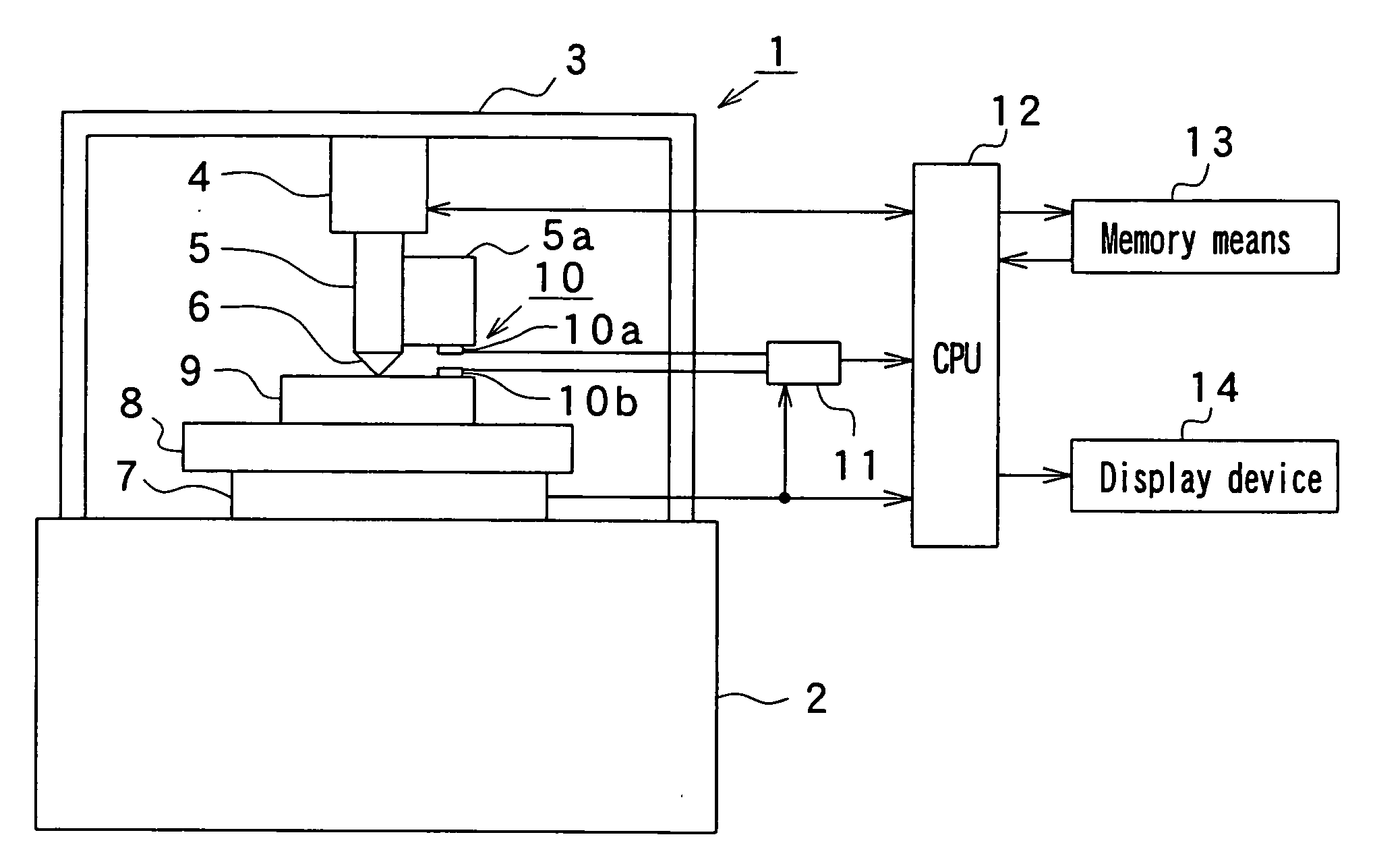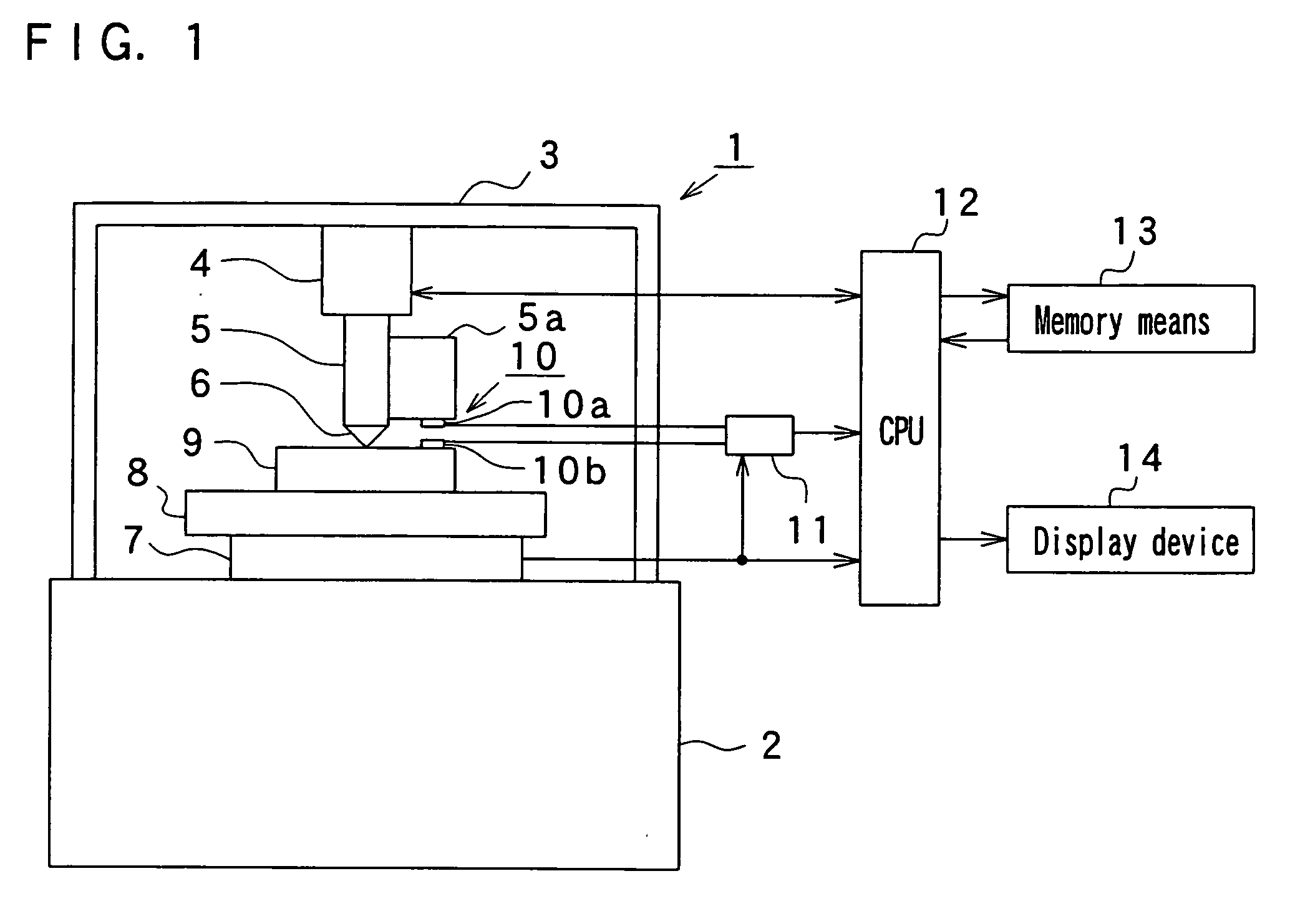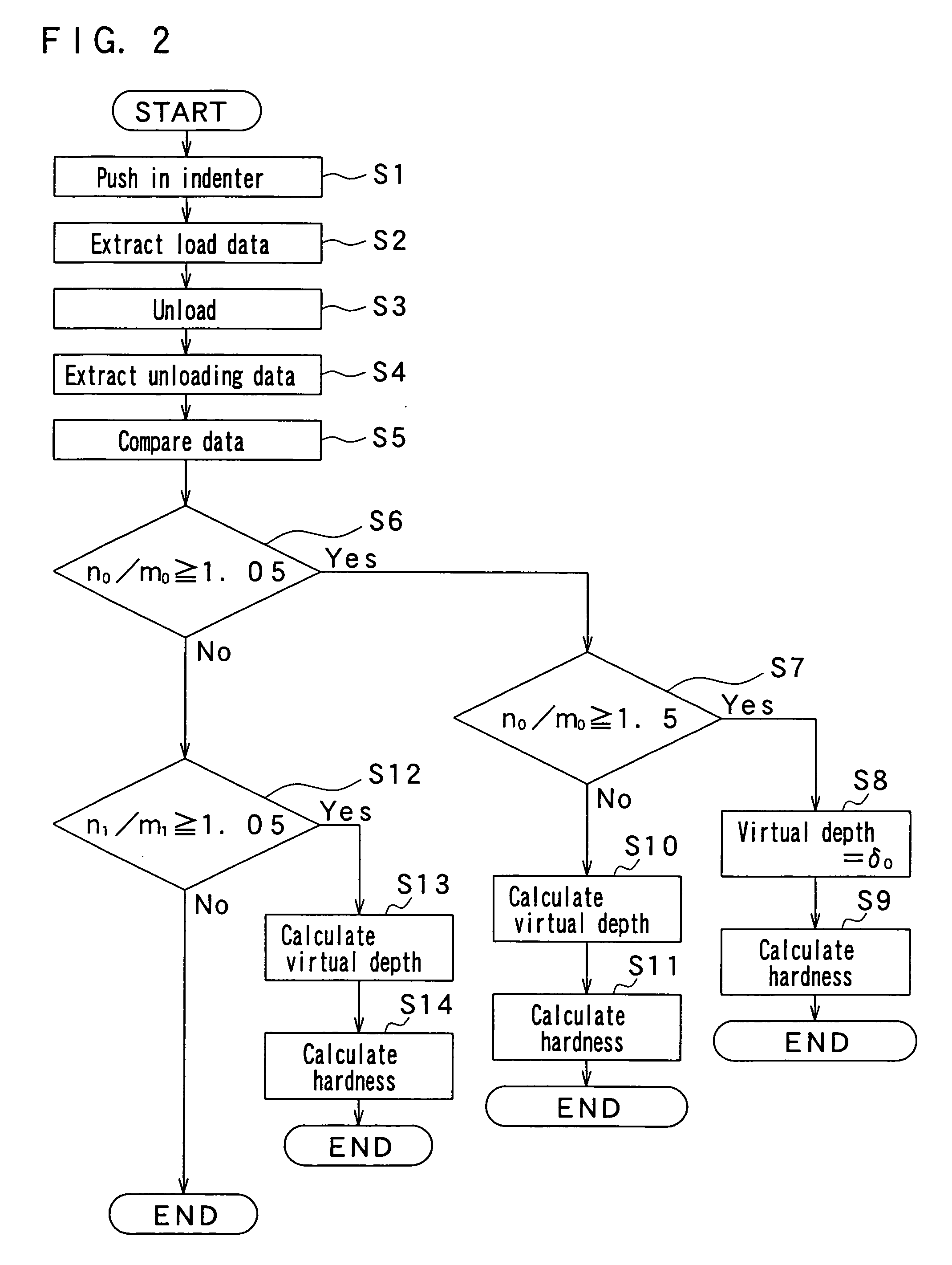Micro-hardness measurement method and micro-hardness meter
a micro-hardness and measurement method technology, applied in the direction of mechanical measuring arrangements, instruments, using mechanical means, etc., can solve the problems of underestimating the hardness of the surface area of permanent depression, difficult to read the diagonal length of the indentation by using an optical type microscope, and inability to obtain the hardness of only the film, etc., to achieve excellent operability, excellent versatility, and simple operation of the hardness calculation
- Summary
- Abstract
- Description
- Claims
- Application Information
AI Technical Summary
Benefits of technology
Problems solved by technology
Method used
Image
Examples
embodiment 1
[0088]FIG. 1 is a block diagram depicting a micro-hardness meter according to one embodiment of the invention, FIG. 2 is a flowchart depicting actions of the micro-hardness meter, and FIG. 3 and FIG. 4 are views depicting the calculation principle of virtual depth δv.
[0089]In FIG. 1, reference numeral 1 denotes a micro-hardness meter according to one embodiment of the invention, 2 denotes a base portion of the micro-hardness meter 1, 3 denotes a frame body erected on the base portion 2, and 4 denotes a load device composed of a piezoelectric actuator and a stepping motor, etc., which is able to increase and decrease the load given to an indenter 6 vertically suspended from the frame body 3 and described later at an optional speed. Reference numeral 5 denotes an indenter support vertically suspended from the load device 4, 5a denotes an extension portion extending sideways of the indenter support 5 and vertically moving along with the indenter support 5, 6 denotes a Vickers or Knoop ...
example 1
[0121]The hardness of a test sample in which a hard glass layer 5 through 10 micrometers thick is formed on the surface of a polycarbonate substrate (10 millimeters thick) was measured by using the micro-hardness meter described in one embodiment.
[0122]The test sample was placed on the stage and a Vickers indenter was pushed in from the surface of the test sample at a rate of 0.2 micrometers per second. After being loaded to the maximum load (the established test force) L0=109 mN, the maximum load L0 was retained for 15 seconds, and next the load of the indenter was unloaded. Finally, the indenter was pulled up from the test sample at the rate of 0.2 micrometers per second same as that when loading.
[0123]FIG. 5 is a view showing the load data, load curve, unloading data, unloading curve and virtual depth δv in Example 1. The abscissa thereof shows the depth and the ordinate thereof shows the load. White circles show actually measured load data while black circles show actually measu...
PUM
| Property | Measurement | Unit |
|---|---|---|
| diagonal length | aaaaa | aaaaa |
| length | aaaaa | aaaaa |
| hardness | aaaaa | aaaaa |
Abstract
Description
Claims
Application Information
 Login to View More
Login to View More - R&D
- Intellectual Property
- Life Sciences
- Materials
- Tech Scout
- Unparalleled Data Quality
- Higher Quality Content
- 60% Fewer Hallucinations
Browse by: Latest US Patents, China's latest patents, Technical Efficacy Thesaurus, Application Domain, Technology Topic, Popular Technical Reports.
© 2025 PatSnap. All rights reserved.Legal|Privacy policy|Modern Slavery Act Transparency Statement|Sitemap|About US| Contact US: help@patsnap.com



